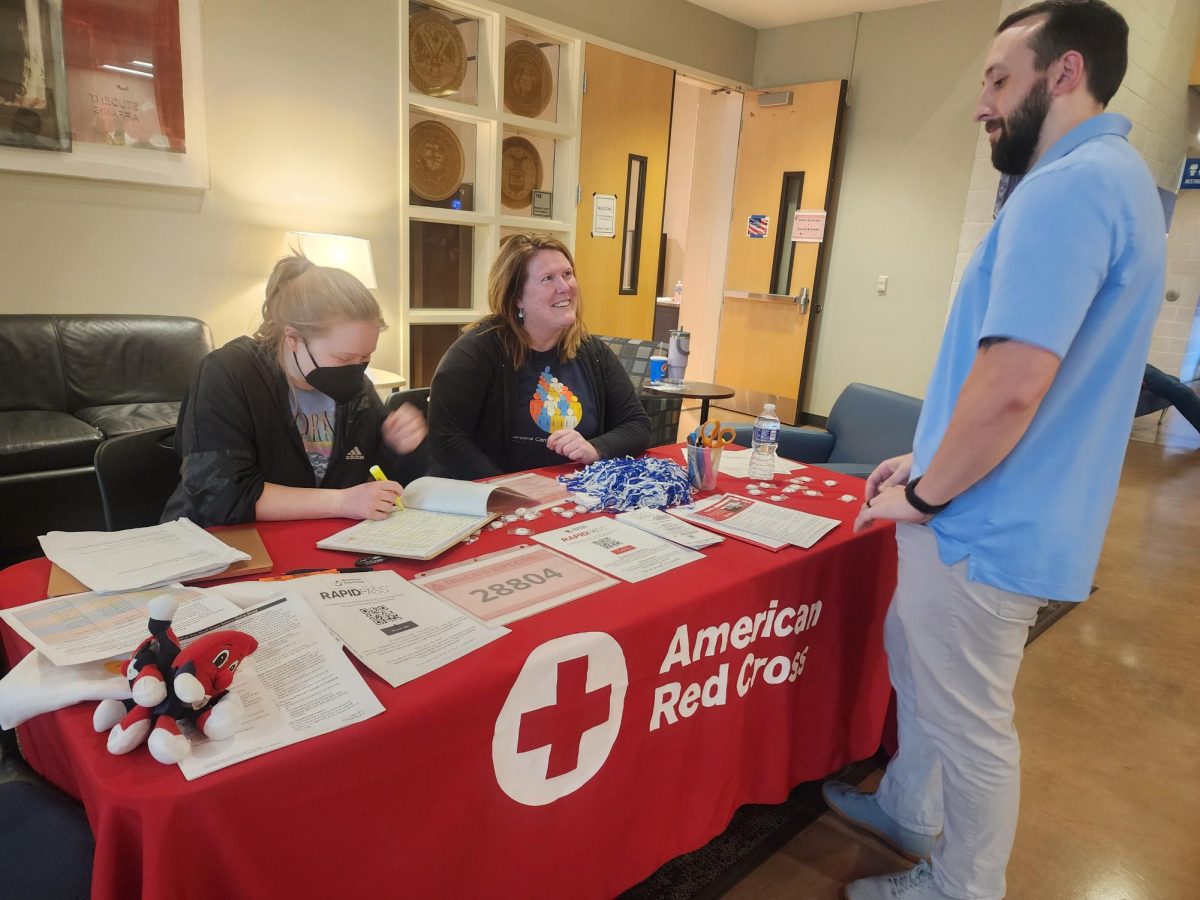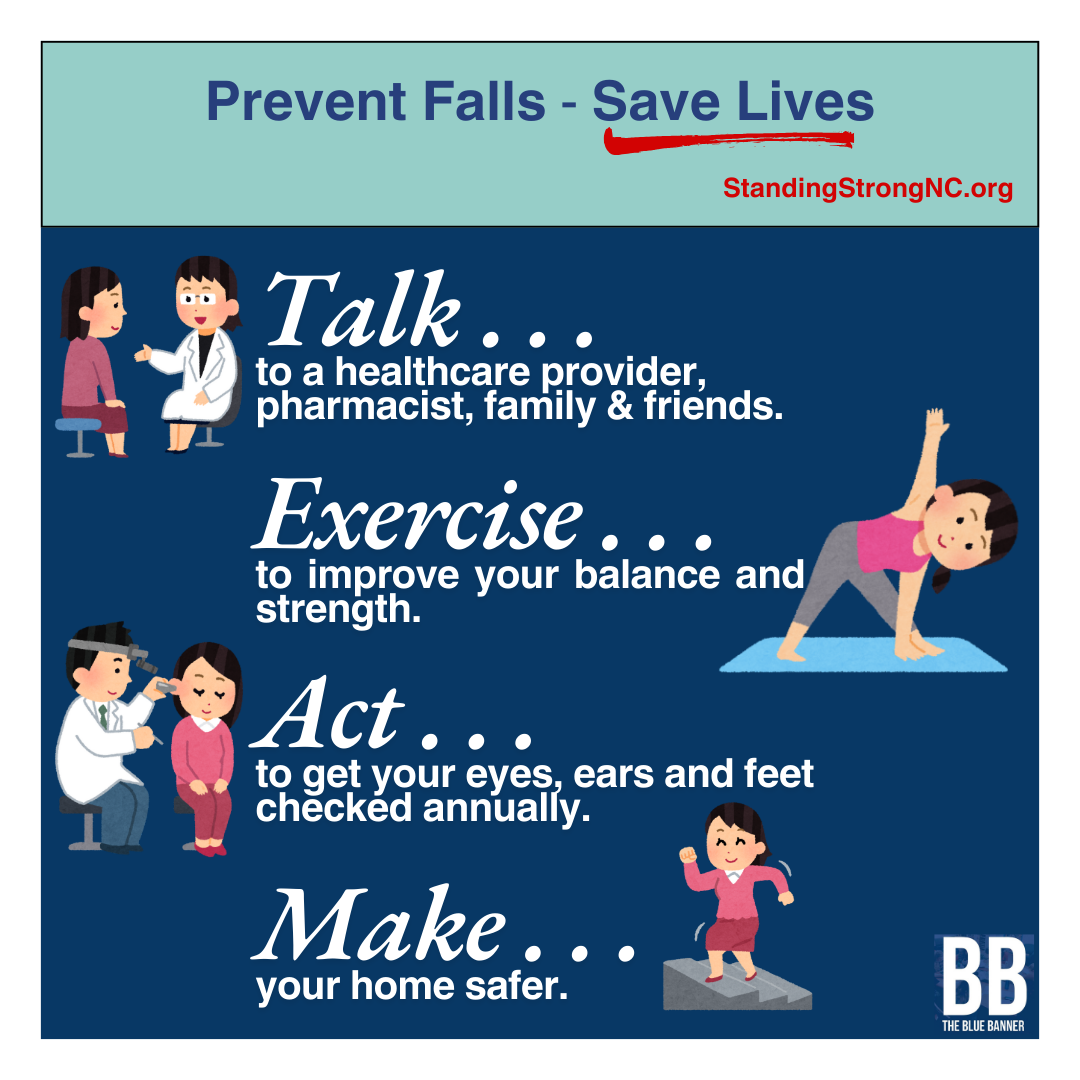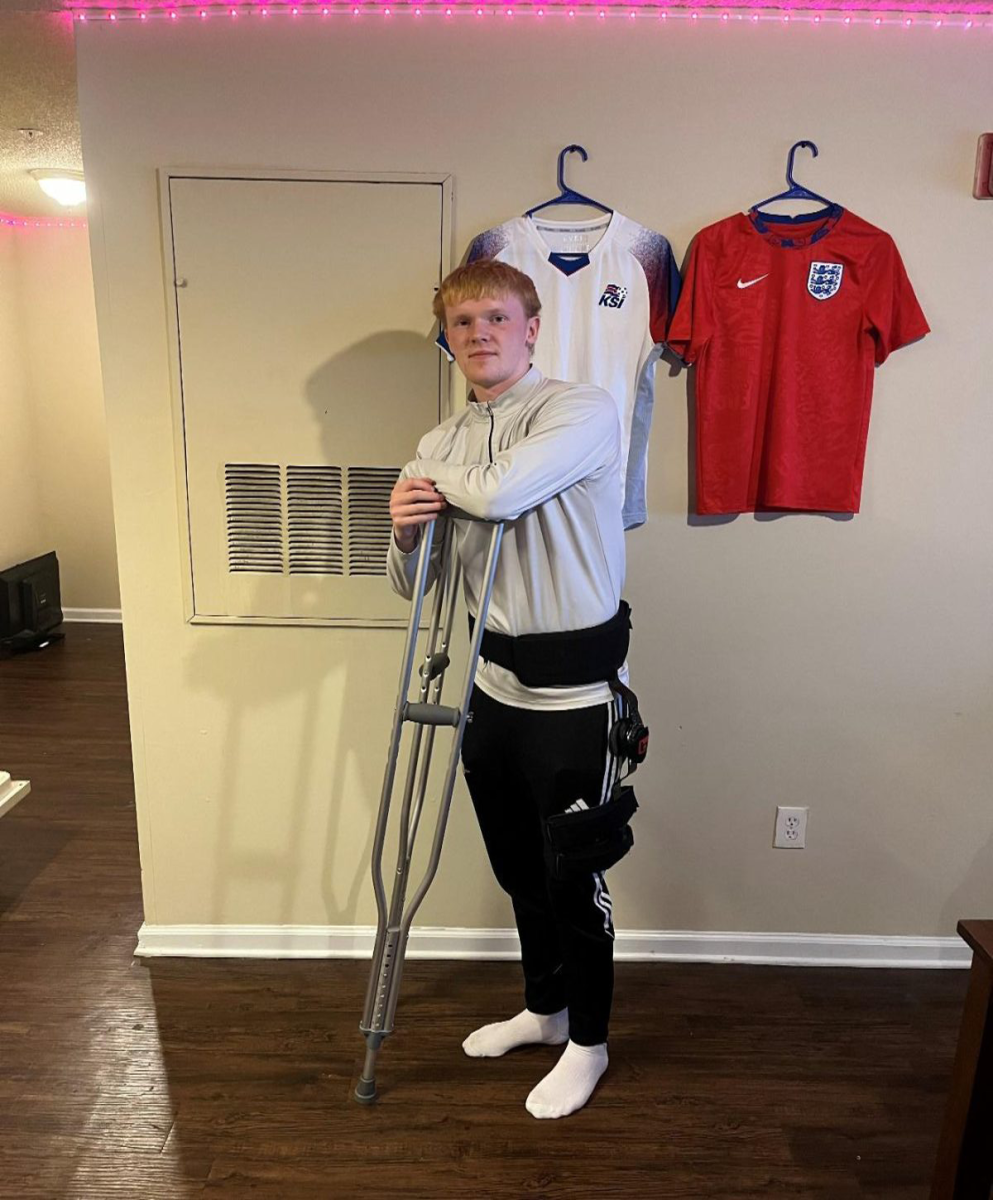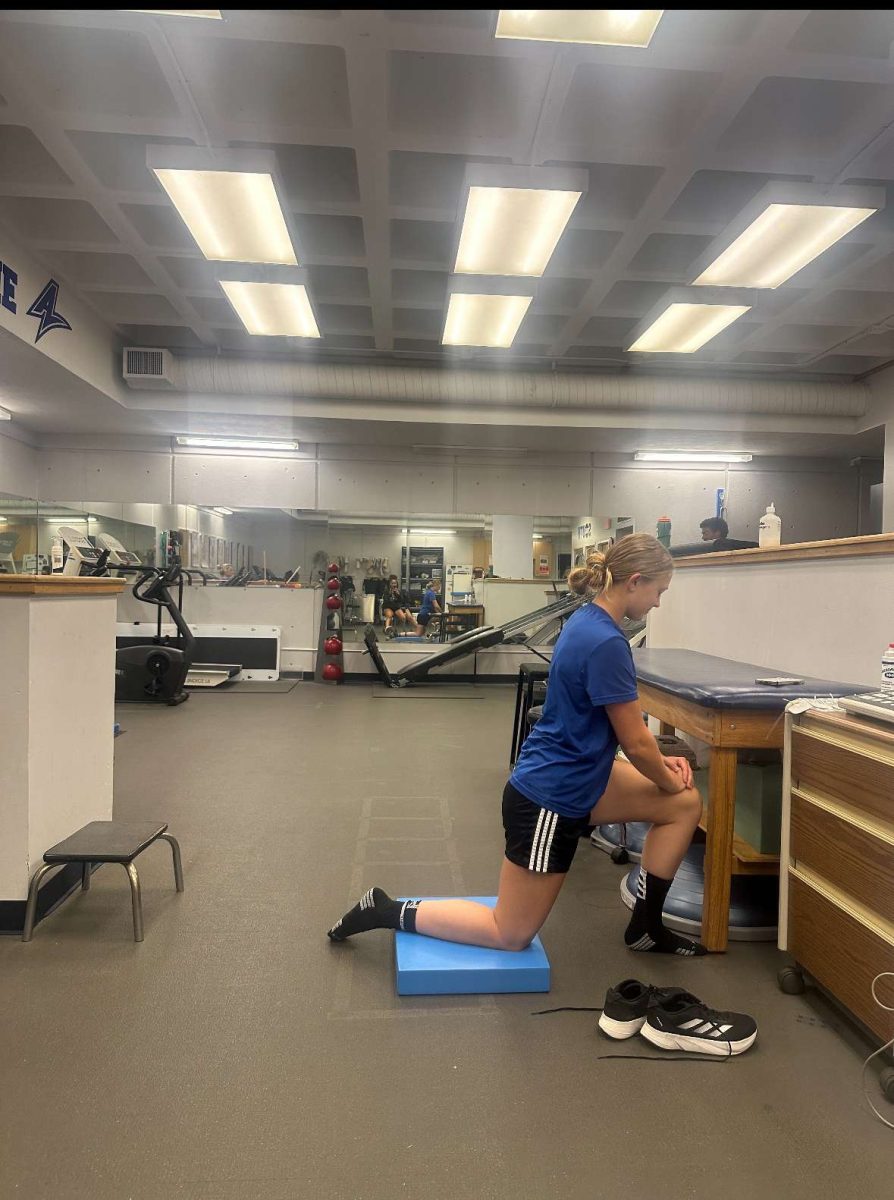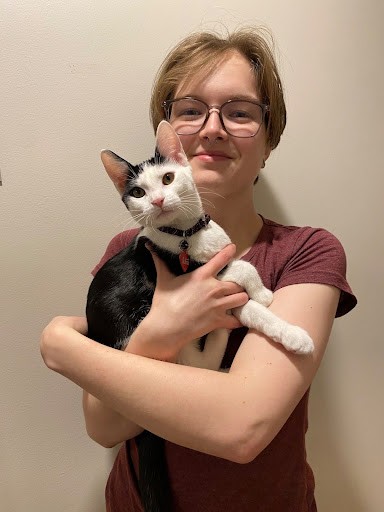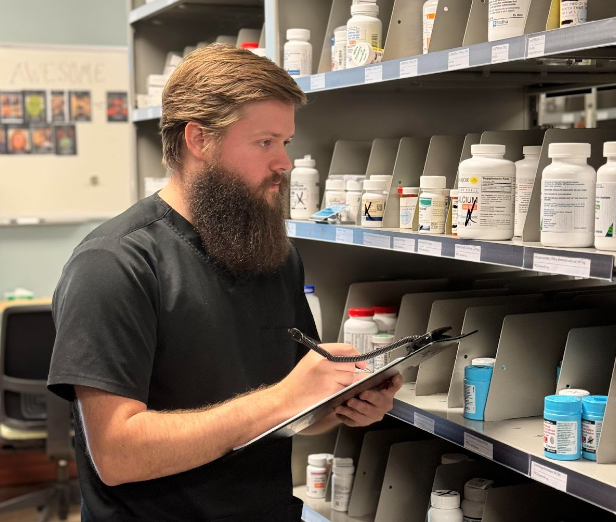Last week, the UNCA Key Center and the American Red Cross held a blood drive in the basement of the HighSmith Student Union building.
“We are in a blood shortage, and I think if you have the ability to give blood, it’s a responsibility we all have. Even if you can’t physically give blood, you can still volunteer to help collect or just spread the word,” said Hope Sikes, a senior political science major at UNCA.
According to Gail Barksdale, an account manager for the American Red Cross, there is a blood shortage in the U.S. and the Red Cross is facing the lowest amount of donors in nearly 20 years.
“I want to emphasize to everyone that someone close to you has likely needed blood before. There’s no substitute for blood, you can’t make it in a lab. We rely on the generosity of donors,” said Kate Johnson, director of the Key Center for Community Engaged Learning.
Sikes, a student organizer at the key center, said they work with the Red Cross to organize four blood drives on campus every year.
“We do two in the Spring and two again in the Fall, the blood drives are one of the most frequent things we do,” Sikes said.
According to Johnson, an individual can donate blood safely every 56 days if they are donating whole blood.
“Here at UNCA, we schedule our blood drives pretty much on that 56 day window, so anyone who donates previously can do so again at the next one,” Johnson said.
The Blood drive took place over the course of two days, Wednesday and Thursday. Over the two-day period, the Red Cross met and beat its donation goal thanks to donations from UNCA’s students.
“This blood drive is so important, there’s a lot of first-time donors who come here and everyone that’s come through has been very giving, we love this blood drive,” Barksdale said.
According to Johnson, last year the Food and Drug Administration lifted restrictions which made it more difficult for gay men to donate blood. Because of that change in policy, the American Red Cross is now allowed to take blood donations from gay men.
“It’s thanks to every blood Center in the U.S. that the lifetime blood ban for gay men was lifted, we all agreed it was discriminatory and unacceptable,” Johnson said.
The FDA Originally banned gay men from donating blood in an effort to combat HIV in the 80s, a tactic Johnson said is incorrect and outdated.
“I’m definitely happy that recently gay men have been allowed to give blood. I think that’s a big thing on a campus that has a lot of LGBTQ students, that’s a big plus for us,” Sikes said.
According to Johnson, the blood ban started as a lifetime ban in the 80s, then became a year deferral, to 3 months and now they’ve moved to being more equitable and do the same tests on everyone’s blood regardless of sexuality.
“I’m really encouraged folks are understanding the impact it had on people was harmful. It was harmful to those who couldn’t donate, and to those who couldn’t get life-saving blood,” Johnson said
Johnson said knowing people won’t get turned away based on their sexual identity is extremely important, especially when they’re trying to do something good.
“It sends the message every person is valued, every person belongs and every person matters. They are important to us because of their varying identities, not despite them,” Johnson said.
Barksdale said all different types of blood types are needed, especially O+ since it can be given to 80% of the population.
“Blood donations are so important because blood can’t be manufactured, only a volunteer can roll up a sleeve and donate blood, it can’t be stockpiled long-term, it only lasts 46 days,” Barksdale said.
According to Barksdale, blood donations are sent to a processing center to be tested for diseases. It is then sent across the nation to wherever it is needed and local hospitals have priority before it’s sent across the nation.
“If you live in the US and you need blood, the Red Cross can get it to you within 24 hours,” Barksdale said.
According to Barksdale, every two seconds someone out there needs a blood transfusion and only 3% of people who are able to donate actually do so. There are 40% fewer donors now than there were 20 years ago.
“On behalf of the patients who desperately need this blood right now, I want to thank everyone who donated on their behalf,” Barksdale said.


![Brooke Pedersen [second from the right] and Luis Reyes [right] hold banners during the Wrap The Woods event.](https://thebluebanner.net/wp-content/uploads/2025/09/ELIZABETH_PRITCHITT_IMG_3470-1200x804.jpg)
















